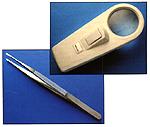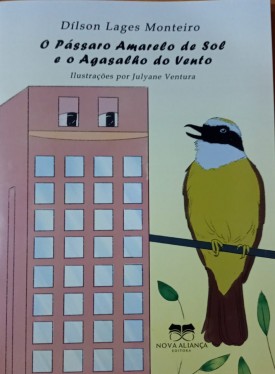[Flávio Bittencourt]
Economia e investimentos: o retorno da confiança nos ativos filatélicos
Dois anos depois do grande escândalo espanhol de 2006, o mercado de selos postais voltou a movimentar mais de 13,5 milhões de euros por ano, na Europa.

(http://filateliaparaelmundo.blogspot.com/2011_01_01_archive.html)

BILL SENKUS, ÓCULOS, PINÇA, LENTE
DE AUMENTO [A BANDEJINHA NEGRA,
COM BENZINA RETIFICADA PARA QUE
QUE SEJA IDENTIFICADA A FILIGRANA,
NÃO APARECE]...
e uma grande biblioteca, atrás desse
conjunto magnífico
(SEM A LEGENDA LOGO ACIMA LIDA,
a foto de Senkus está, na web, em:
http://ephemera.typepad.com/ephemera/2007/01/interview_with__2.html)
COLECIONISMO - O PORTAL DO COLECIONADOR
ENSINA-NOS QUE:
"(...) [O COLECIONADOR CUIDADOSO] Após verificar que um selo colado sobre um envelope, que não tenha nenhuma informação adicional, que possa servir para um estudo de história postal e ser um selo comum, se possível, ter inclusive um outro sobre envelope em boas condições, ai então, podemos recortar com cuidado, bem longe do selo, depois colocar o fragmento num recipiente com água para que seja feita a separação do papel, deixando-o em seguida secar por alguns minutos sobre folhas de jornal, ficando assim, pronto para ser colecionado.
No Brasil, a partir de 1995, além dos tradicionais selos com a goma original, que precisa ser umedecida antes de serem fixados as cartas, foi introduzida uma novidade neste setor, ou seja, selos com goma adesiva, que depois de destacados. Já estão prontos para serem colados nos envelopes. Estes selos além de serem muito bonitos, têm uma grande praticidade. Com este tipo de selos, devemos agir diferente dos outros, pois devido à goma ser muito forte e irremovível, não há a necessidade de lavar os selos, apenas recortamos com o mesmo cuidado anterior, estando em seguida, prontos para colecionadores.
 Com o tempo, após o colecionador familiarizar-se com selos, usando sempre pinça para toca-los e lupa para verificar pequenos detalhes, deverá colocar os selos num classificador para que os mesmos fiquem conservados por tempo indeterminado, ai então, poderão ser adquiridos outros materiais que auxiliarão, por exemplo, a saber, o tipo de papel utilizado na fabricação de um determinado selo, onde é utilizada uma pequena bandeja preta de plástico. Chamada de filigranoscópio, peça esta de baixo valor (por volta de 2,00). Coloca-se o selo nesta bandeja preta, com a imagem virada para baixo e a parte de trás do selo voltada para cima. Em seguida, com um conta-gotas, pinga-se algumas gotas de Benzina sobre o selo, e irá aparecer uma marca é que identificam o tipo do papel empregado nos mesmos e precisão. Isto ocorre com os selos emitidos no Brasil no período entre 1902 a 1975.
Com o tempo, após o colecionador familiarizar-se com selos, usando sempre pinça para toca-los e lupa para verificar pequenos detalhes, deverá colocar os selos num classificador para que os mesmos fiquem conservados por tempo indeterminado, ai então, poderão ser adquiridos outros materiais que auxiliarão, por exemplo, a saber, o tipo de papel utilizado na fabricação de um determinado selo, onde é utilizada uma pequena bandeja preta de plástico. Chamada de filigranoscópio, peça esta de baixo valor (por volta de 2,00). Coloca-se o selo nesta bandeja preta, com a imagem virada para baixo e a parte de trás do selo voltada para cima. Em seguida, com um conta-gotas, pinga-se algumas gotas de Benzina sobre o selo, e irá aparecer uma marca é que identificam o tipo do papel empregado nos mesmos e precisão. Isto ocorre com os selos emitidos no Brasil no período entre 1902 a 1975.
Vários paises no mundo também imprimiram seus selos em papel filigranado com a finalidade de evitar falsificações, que eram constantes na época.
Normalmente os selos posteriores, que foram emitidos com outros tipos de papéis, não filigranados, estes selos são classificados pela imagem impressa nos mesmo.
Para a conservação dos selos NOVOS, aconselha-se que sejam colocados em protetores plásticos, comumente chamados de Havids, que na realidade são tiras duplas de plásticos, uma incolor e uma preta, unidas em uma extremidade. Estas tiras são encontradas com facilidade em qualquer loja filatélica.
Estes Havids são vendidos em embalagens contendo 20 tiras de 20 cm., com preço que varia de R$ 3,00 a R$ 3,50 cada embalagem de 20 tiras. Estas tiras vão sendo cortadas com uma tesoura, de acordo com o tamanho de cada selo. O selo
 colocado nestes protetores, fica de forma ideal para ser colocado nos classificadores ou álbuns, sem que colem em suas folhas.
colocado nestes protetores, fica de forma ideal para ser colocado nos classificadores ou álbuns, sem que colem em suas folhas.
Avançando um pouco mais em uma coleção, por exemplo, em selos do Brasil, o colecionador, deverá adquirir um álbum apropriado, onde serão colocados os selos de uma forma definitiva.
Estes álbuns também são encontrados nas lojas filatélicas, e trazem estampados em suas folhas, os desenhos dos selos originais emitidos pelos Correios, desde o primeiro até os dias atuais.
A Fixação dos selos nestes álbuns devem obedecer a um critério, ou seja: No caso dos selos novos, estes devem obrigatoriamente ser colocados com Havids, para que fique a goma dos mesmos danificados. Sendo que os selos podem ser pedacinhos de papéis, já com goma, próprios para esta finalidade, que não estragando do os selos. Estas charneiras são vendidas em envelopes com 1.000 unidades, por um preço que varia de R$ 7,00 a R$ 10,00 o envelope.
 Com o passar do tempo, um catálogo de selos será muito útil, pois além de servir como fonte geral de informações sobre cada selo, como por exemplo: Tipos de papéis, número de exemplares emitidos, suas denteações diversas, variedades existentes, inclusive preço de cada selo. Estes catálogos são uma fonte de informações, indispensáveis para os colecionadores médios e avançados. (...)"
Com o passar do tempo, um catálogo de selos será muito útil, pois além de servir como fonte geral de informações sobre cada selo, como por exemplo: Tipos de papéis, número de exemplares emitidos, suas denteações diversas, variedades existentes, inclusive preço de cada selo. Estes catálogos são uma fonte de informações, indispensáveis para os colecionadores médios e avançados. (...)"
(SERGIO MARQUES DA SILVA,
http://www.colecionismo.com.br/filatelia/iniciante/iniciante008/index.htm)
(http://br.ioffer.com/i/centenary-international-philatelic-exhibition-1947-167965873?source=eisi)
Centenary International Philatelic Exhibition 1947:

(http://br.ioffer.com/i/1947-centenary-intnl-philatelic-expo-mnh-blocks-of-4-198158788)
"TEMPO DE RECUPERAÇÃO DEPOIS DO TREMENDO TRAUMA DE 2006:
DOIS ANOS, mas ainda restam, cinco anos depois, sequelas
psicológico-econômicas da implosão governamental empreendida pela
Espanha para cima da AFINSA e do FÓRUM FILATÉLICO
(espanhol); pois bem, na medida em que o próprio Rei da Espanha
coleciona selos - possivelmente investindo boa grana nesse ativo
de alta liquidez - o governo daquele País correu para que houvesse
o menor trauma possível e que o problema fosse resolvido
de forma rápida, MAS FOI UM ESTOURO E TANTO..."
(COLUNA "Recontando estórias do domínio público")
"PODERIA TER DITO - mas não o fez - ALGUM REI EUROPEU
PARA OS MEGAINVESTIDORES DE ALTO RISCO DA
AFINSA E DO FÓRUM FILATÉLICO, EM 2006:
"- Por que não aplicam em investimentos lucrativos
as poupanças só de vocês?"
(IDEM)

(http://www.overstock.com/Sports-Toys/American-Coin-Treasures-Brass-Train-Stamp-Money-Clip/3036195/product.html)

(http://alphabetilately.com/economics.html)
"CAPITALISTAS ESPERTOS, BUSCANDO MAIS-VALIA DESVAIRADA,
DERAM UM TREMENDO GOLPE - mas não é isso que alegam
competentes advogados de defesa dos réus -, NA ESPANHA,
GOLPE ESSE QUE ESTOUROU EM 2006, mas os defensores desses
JOGADORES PROFISSIONAIS DAS FINANÇAS PARTICULARES
E APLICAÇÕES FINANCEIRAS QUE PRODUZEM LUCRO CONSIDERÁVEL
afirmam que não havia razão para ter acontecido a intervenção
governamental-espanhola da forma rápida que houve... PARA
RESOLVER LOGO AQUELA parada doida"
(COLUNA "Recontando...")
EM RESPEITO E PROFUNDA ADMIRAÇÃO A BILL SENKUS,
ESTUDIOSO E COLECIONADOR DE SELOS QUE EXPLICA
DE FORMA ABSOLUTAMENTE BRILHANTE E DEFINITIVA - A
PESSOAS QUE NÃO CONHECEM OS MEANDROS
MAIS PROFUNDOS DA CIÊNCIA ECONÔMICA - A
ECONOMIA DA COLEÇÃO DE SELOS POSTAIS E
AGRADECENDO A SERGIO MARQUES DA SILVA PELAS
ORIENTAÇÕES DADAS AO COLECIONADOR QUE PRETENDE
PROTEGER SUAS BELAS PEÇAS FILATÉLICAS,
também para que os admiradores de exposições - se ele
resolver publicamente exibir sua(s) coleção(coleções), socializando
os conhecimentos, afetos e estéticas relevantes
que os selos postais maravilhosamente transmitem (*) -
possam deliciar-se na contemplação de imagens
filatelicamente impactantes ou não (coleções de
selos ordinários, mas nem todos eles necessariamente
baratos)
(*) - EDUCAÇÃO PATRIMONIAL:
COMERCIANTES SÉRIOS DE SELOS, MOEDAS E CÉDULAS,
COLECIONADORES-PESQUISADORES GENEROSOS E
PROFESSORES-ATENTOS-AOS-BONS-RESULTADOS-DIDÁTICOS-DAS-
EXIBIÇÕES-EM-SALA-DE-AULA-DE-ILUSTRAÇÕES-INTERESSANTES
QUE TÊM MERITÓRIAS PREOCUPAÇÕES COM A TRANSMISSÃO
DO CONHECIMENTO HISTÓRICO E ARTÍSTICO A ESTUDANTES
MUITAS VEZES CARENTES (só de recursos materiais) ENCARREGAM-SE
DE, PESSOALMENTE, MINISTRAR PALESTRAS, por vezes acompanhadas
de ótimas exposições em murais, álbuns, publicações especializadas,
exibições em sequências bipadas (sonorizadas) de slides
[ANTIGAMENTE] e programas computadorizados em power point
[ATUALMENTE]
17.5.2011 - Quando um país é rico, o volume de capitais aplicados em obras de arte, selos postais, moedas, cédulas, tapetes persas, vinhos de melhores safras, jóias, bichinhos de balata da Amazônia, antiguidades bonitas e assemelhados é enorme - Bem, vai chegar um dia em que os brasileiros, por chegarmos a ter (espera-se!) dinheiro para fazer poupanças não-apenas-financeiras poderemos aplicar grandes somas em acervos particulares de pintura, escultura, filatelia, numismática, objetos antigos (MAS NUNCA FURTADOS), animais esplêndidos esculpidos por José Alcântara (ARTESÃO DE MANAUS) e assim por diante. (O ESTOURO DA AFINSA E DO FÓRUM FILATÉLICO ACONTECEU EM 2006 E O ARTIGO JORNALÍSTICO A SEGUIR TRANSCRITO É DE 2008; o texto de Senkus, anterior (maio de 2000) está, adiante, depois da matéria que se segue.) F. A. L. Bittencourt ([email protected])
[*] - ARTESANATO AMAZÔNICO / ANIMAIS MOLDADOS EM BALATA, NESTE MESMO ESPAÇO
DE INFORMAÇÃO E CULTURA:
http://www.portalentretextos.com.br/colunas/recontando-estorias-do-dominio-publico/o-aproveitamento-artesanal-da-balata,236,4258.html.
[**] - ESCULTURAS EM MADEIRA DE JOSÉ ALCÂNTARA (idem):
http://www.portalentretextos.com.br/colunas/recontando-estorias-do-dominio-publico/o-amazonense-que-esculpe-oncas-peixes-cobras-antas-e-harpias,236,2392.html.
MATÉRIA JORNALÍSTICA DE PORTUGAL,
PAÍS QUE FOI MAIS DIRETAMENTE AFETADO
PELO estouro ESPANHOL DE 2006
(há associação de AFETADOS - ou seja,
atingidos - pelos eventos preocupantes
e danosos à economia popular que houve,
em 2006):
"Finanças Pessoais 2008-09-12
Como os selos voltam a ser um negócio
Dois anos depois do escândalo Afinsa, volta a haver pessoas a apostar na Filatelia.
O escândalo dos selos da Afinsa e do Fórum Filatélico rebentou em Maio de 2006, em Espanha. Acusadas de burla e de praticarem um esquema de venda em pirâmide, as duas empresas espanholas - que se dedicavam ao negócio dos bens tangíveis (nomeadamente selos) - lesaram milhares de investidores portugueses e espanhóis e abalaram a confiança no investimento filatélico. A mega fraude, que ainda está a ser julgada em tribunal, obrigou, inclusive, a Comissão de Mercado de Valores Mobiliários a chamar a si a supervisão do investimento em bens tangíveis para prevenir futuras situações de falência e fraude. Esta regulação - nova - incide sobre as empresas que oferecem este serviço, mas muitos milhares de portugueses investem em selos por iniciativa própria.
Mais de dois anos depois do escândalo, o mercado dos selos continua vivo e, quando respeitadas as cautelas, pode valer a pena. Pelo menos, o número de portugueses que, a título individual, continua a coleccionar material filatélico está em crescimento. Investir em selos, cartas, postais de correio, entre outras peças filatélicas pode gerar um retorno médio anual em torno dos 10%. “Os catálogos de preços normalmente actualizam-se entre 5% a 10%”, diz Pedro Pereira, presidente da Federação Portuguesa de Filatelia (FPF), ao Diário Económico.
Os especialistas aconselham a analisar à lupa este mercado que se divide em duas vertentes: o coleccionismo e o investimento. “O filatelista não investe em selos, colecciona. O investimento vem por acréscimo, quando o filatelista desiste de coleccionar e decide vender”, acrescenta Pedro Pereira. O número de investidores neste mercado ronda os 15 mil em Portugal, mas o número de coleccionadores é muito superior. “A Federação tem cerca de 700 filatelistas de alta competição e coleccionadores devem ser cerca de 25 mil”. Nos CTT [CTT - Correios de Portugal S. A.], são cerca de 10 mil os clientes que mensalmente compram todo o material filatélico emitido. “Estimamos que, dos 250 mil selos que fazemos de cada taxa e emissão, cerca de 200 mil são destinados ao coleccionismo. Vendemos exclusivamente para coleccionismo cerca de 25 milhões de selos por ano”, avançou Raúl Moreira, director da Filatelia dos CTT. A filatelia contribui com cerca de 11 milhões de euros para a receita anual dos CTT.
As estimativas indicam que o mercado filatélico movimenta mais de 13,5 milhões de euros por ano. E a valorização média anual convida ao investimento, mas os especialistas reconhecem que apostar em bens tangíveis exige hoje mais preocupação e cautela, depois da polémica em torno das duas empresas espanholas, acusadas de burla. Para quem quer investir, o primeiro passo é contactar especialistas, coleccionadores e marcar presença em leilões e exposições. Mais do que a antiguidade, a raridade e, sobretudo, a lei da oferta e da procura são os principais critérios de valorização deste tipo de investimento.
Os selos mais cobiçados do mercado e com maior valorização
Selo em cortiça - Forte procura nacional e internacional
Lançado em 2007, esgotou rapidamente. Os CTT venderam-no ao valor facial de 1 euro. Cerca de 10 meses depois já está avaliado em mais de 20 euros.
Álvaro Cunhal - A oferta e a procura definem o valor
Colecção dedicada a Álvaro Cunhal, lançada em 2005 esgotou ao fim de 3 meses de vendas. Com o valor facial de 1 euro, actualmente já custa 40 euros.
Colecção de Macau - Desde o início dos anos 90
Os anos 1853 até 1910 são considerados os melhores em material filatélico. E as antigas colónias portuguesas são muito valorizadas. Esta colecção é exemplo disso.
100 reis de D. Maria - De 1853, é o selo mais valioso
Emitido em Julho de 1853, diz a Federação Portuguesa de Filatelia que o selo 100 reis de D. Maria continua a ser o selo mais valioso. Em 1995, foi vendido um par único.
in DE".
(http://www.dragteam.info/forum/economia-e-financas/52631-como-os-selos-voltam-ser-um-negocio.html)
===
ARTIGO DE William M. Senkus,
IMPRESSIONANTEMENTE ELUCIDATIVO
(produzido em MAIO DE 2000,
ou seja, anos antes do ESTOURO ESPANHOL):
| "The Economics of Stamp Collecting |
|
It's natural to want to get money back for something you buy, and many of us put a lot of money into our collections, whether they be stamps or trading cards or antiques or paperweights. We start to think of our collections as investments, with guaranteed returns ready when we retire or expire. And that's our mistake. Collectibles are not an investment in the way that real estate and stocks are. Even those conventional investments are not sure things - witness the recent implosion of some segments of the stock market (I am writing this May 26, 2000). Collectibles are a far more volatile market, and largely a retail market at that. We don't expect to sell our cars or sofas or kitchen utensils for their original value, so why do we think we can do it with our stamps?
Stamps do have an intrinsic value of sorts, of course, and that's one source of our confusion - almost every stamp issued in this country for the past 150 years is still valid as postage at its face value, and most of them were issued in such large quantities, and saved by so many collectors, that they are still worth only their face value. Consider this, though - you can't take stamps to your Post Office and redeem them for cash. You can't even trade them in for other stamps - once you walk away from the postal counter, the stamps you bought are yours, period. Granted, there have been periods in this country when stamps WERE used as currency, especially during and after the Civil War, when there was a shortage of coins. But you are unlikely to find a merchant willing to take stamps in lieu of cash today.
Another source of our confusion is the 'catalog value' of stamps. If I look up all my stamps in a Scott Catalog or a Brookman Pricing Guide, it looks like I'm sitting on a gold mine. So why aren't all the stamp dealers rich? There are a few who are doing well, but most are just getting by, their stamp dealing is a hobby, a pastime. It costs fifty to a hundred dollars a day to rent a table at a stamp bourse these days, several hundred a day at a major show. Add to that the cost of driving one's stock to the show, setting up and tending a table, renting a room for the night, meals, taxes, losses to theft and bad checks, etc., and you should begin to understand why no dealer can afford to pay you more than half what he hopes to sell your stamps for. AND that's for the stamps with a good market, the MNH or LH, VF or better, clean attractive items with a catalog value of $50 or more. A stamp like that will probably sell fairly quickly, but the cheaper ones, or ones that don't look as good may languish for months or years in a dealer's stock. So now add the cost of keeping an inventory, which a dealer of course needs, since he can't attract repeat customers unless he does a reasonably good job of filling their Want Lists. I try to give my business to my favorite dealers as much as I can, but when an item has been on my list for several years and none of the guys I like can sell it to me, I start looking elsewhere. You are starting to understand, I hope.
What about the old advice that the high-end items will always increase in value, so you should buy only the best, and the most expensive items first? Well, there's some truth to that. What I said above about a dealer having a better chance of moving a high quality item is true, so if what matters most to you is getting back the highest percentage of what you paid when you sell, buy only the best. That doesn't mean you'll make a profit, of course - you're still buying at retail and selling at wholesale. The dealer still has to make a profit. And there's still no guarantee you'll get any fixed percentage of your original 'investment'. A dealer will pay based on current catalog value, and catalog values can fall - compare the catalog value of a set of Zepps in 1982 to what it is now. On the other hand, the difference in price between the really good items and the merely ordinary ones can be enormous. If your resources are unlimited, by all means buy only the best, but I prefer to fill a whole page with decent, ordinary stamps, rather than buy one gem. I'd like to complete my collection in THIS lifetime.
How about auctions? The commission charged the seller is typically only 10 or 15 percent. That sounds like a pretty good deal. And one can do well selling top-quality material at auction at the right time with the right auction house. So if you have only top-quality material, an auction is probably a good way to sell. Otherwise, well, not so much. No matter how high the catalog value of an item, if its quality is poor, no one will want it, or they will be willing to pay only a small fraction of catalog. And auctions are best for big-ticket items - most auction houses have minimum values per lot - it doesn't pay to auction an individual lot worth less than $40 or $50. So your lower value items must be either grouped - which generally means they will sell for a lower percentage of catalog value - or sold somewhere else, and you are back where you started. Even with the items worth big bucks, there's no guarantee - I have tracked items that sold for $10,000 a year ago, but only $7,500 today, simply because tastes changed or the right buyers were on vacation. Can you set minimum bids? Maybe, but you may also have to pay for that privilege, e.g., pay a fee for each lot that fails to sell. So an auction is something of a gamble, no matter what you are selling. Again, only the dealer has a good chance of making a profit.
What it comes down to is this - the stamp market is really many markets, each with separate rules. There are the physical markets - dealers, auctions, bid-boards, the Internet, etc.; and there are the material markets - New issues, classics, high-catalog items, low catalog items. If you are buying new issues, most of them will never be worth more than face value. Yes, there are occasional exceptions, like the Bugs Bunny imperf sheetlet, but buying those cheaply is largely luck. If you are buying high-catalog items, over $50, say, and taking care to get authentic, decent quality material, and to pay a reasonable price based on condition, you should be able to do reasonably well, if you can choose when and where to sell. For the rest, items with catalog values in the $5 to $50 range - and pretty much regardless of age - are seldom worth more than half of catalog.
Horse trading is definitely a critical part of preserving your investment. By that I mean you have to know what you are buying and selling, and what it is worth, and one critical factor in that is authenticity. Most reputable dealers will guarantee the genuineness and value of what they sell, for a reasonable period. If you buy an item that turns out to be a fake, or to have hidden faults, an honest dealer will refund your money, IF you make the claim within a specified number of days or months. After that, you are on your own. So you should learn the basics of authenticating what you collect, or insist on a certificate with all the tricky items, or have everything authenticated yourself. Most reputable dealers will agree to sell tricky items contingent on a certificate, i.e. if you send the item to a mutually agreed upon expert, and the item is returned as a fake, or faulty, they will refund what you paid, plus the cost of the certificate. Just be sure those terms are clear to both of you. Your best protection is knowledge. Learn how to detect fakes, and avoid questionable material. Get a certificate if you are the least bit unsure. There are good books available to teach you.
Dealing with knowledgeable, ethical dealers is essential, and one good way to judge a dealer is to ask him questions such as what societies he belongs to. If he does not belong to either the APS or the ASDA - preferably both - you might want to take your business elsewhere - both of those organizations require applicants to sign a strict Code of Ethics to join, and to adhere to those standards to remain members. Sure, that's no guarantee, but it's a start. And membership proves a dealer is serious about his profession.
Another thing you should ask someone you intend to do business with is What is his policy on returns? I know a few dealers who say they will take anything back, any time, and give a full refund, no questions asked. Most will give refunds if you return items within a specified period. If a dealer is offended by the question, or has a very restrictive policy, I recommend you avoid him. And while you are at it, ask your dealer how much he will pay to buy back an item five years from now, i.e., how he evalates material for purchase.
Another essential part of 'horse trading' is knowing what percent of catalog value to pay for something. If you paid too much to begin with, you're very unlikely to be pleased with what a stamp is worth when you go to sell it. So how do you know? As with most things in life, experience is the best teacher, and you will probably have to make a few mistakes before you figure it out. Here are some ways to start:
|
- Go to a stamp bourse and look at the stock of several different dealers. Compare their prices for items you want to buy. How and why do those prices differ? If Dealer A has a stamp at $40 and Dealer B has the same stamp at $60, is the more expensive stamp better in some significant way? Is its centering or gum or color markedly superior? Ask those two dealers how they price their material, and if you are brave, ask them to explain the difference in price. How they answer may tell you which one you prefer to do business with.
- Watch auctions for items you are seeking, decide what you think those items should sell for, then compare your expectations with the actual final bids.
- Take some items from your collection and show them to a few dealers - ask them what they would pay you for them if you wanted to sell them.
|
By the way, you should keep track of what you pay for any item worth more than $20, and what percent of current catalog value that was, and where you bought it. If you do not know what you paid, you have no way to judge whether you are getting a good price when you sell. This is especially true of items for which there is no catalog, such as covers. I have seen the same cover at several different dealers, priced as low as $5 at one, and as high as $100 at another - the higher price may be realistic, or it may be wishful thinking, but if you pay the $100 price, it will help to know where you got that item when you want to sell it.
When and where to sell is also an important part of getting a good price. I discussed some of the pros and cons of selling at auction; other options include outright sale to a dealer, bid boards, private treaty sale, and the Internet. Each has its merits, and is better or worse depending on various criteria. If you have plenty of time, experiment with them - sell a few items each way, and see which gives the best return. Time can be a critical factor, no matter how you choose to sell. The stamp market has been strong for good material lately, but if you need cash within a month, you probably won't be able to get the best price, because pretty much your only option will be an outright sale to a dealer.
Preparing your collection for sale is also an important part of getting a good price - as I mentioned above, mounted collections, especially with hinges or mounts that make it impossible to examine the stamps, will almost never get a good price. One exception might be an award-winning competitive exhibit, which could be worth more as a unit than as individual items. But that is rare. If you insist on selling a collection as a unit, prepare to get less money for it.
Let's suppose you have taken the time and effort to transfer all your stamps to high- quality stock pages - not the cheap manila kind that conceal most of the stamp and end up mangling half the stamps you put in them, but the black cardboard ones with rows of plastic holders, so that it's easy to get the stamps in and out safely, and to examine the gum side with minimal trouble. You have organized them by catalog number, and also written up little labels with catalog numbers, maybe condition, and catalog value, like this - nothing fancy, just clear and simple.
"Hey, that's a lot of work," you say. "Well, Duh!" as your ten-year old grand-son might say. Did you think your dealer's stock books got catalogued by magic? Depending on the value of the stamp, he will have to verify what you do, but he'll be saved a large part of the work. If he likes what you did well enough, he may even offer you a job as his assistant! Then you can REALLY learn the economics of stamp collecting.
Next, having put everything on stock pages, and sorted and identified it with catalog numbers and values, decide how much you think each item is worth. If you bought wisely, you can expect to get 60% to 80% of the same percentage of catalog value that you paid. So, for example, if you paid $100 for an item when the catalog value was $200, and the current catalog value is $250, you can hope to sell it now for $75 to $100. In my experience, that rule holds true almost regardless of how you sell, on average. You may get more for certain items in certain markets at certain times, but that's largely luck. If you are selling an entire collection, those differences will even out.
BUT, please remember, what I am saying applies only to the higher-catalog items. Stamps you bought at face value, or with retail values under $10, are not going to be worth more than half what you paid for them.
What I am saying here is just my experience, of course - but I do have the experience. I have been buying and selling stamps for about fifteen years now, and what I have written here is what I have learned. Your experience may differ, but the key thing is to gain that experience. Don't wait until you decide to sell your collection to learn how to do it. You must have some duplicates or some material you just don't want. Sell it now, and learn how.
Condition, Condition, Condition! In real estate, the three keys to value are, Location, Location, Location. In stamps, it's Condition, Condition, Condition. Look at the three stamps below. All are Scott 68 - Which is worth the most, and why? Which the least? Why?

I hope you said the one on the left is worthless, and the one on the right looks like it could be worth more than full catalog value ($450 in 1997). The one in the middle, well, a few bucks. The reasons have to do with condition. A mint stamp is (almost always) worth more than a used one. A stamp that looks Post-Office fresh is ALWAYS worth more than one that is stained and scuffed and creased. A stamp with a light cancel is worth more than one with a dark cancel, unless the cancel itself has value. A stamp that is well centered is worth more than one that is not, unless the centering is so dramatically wrong that it qualifies as an error. A stamp with a tear or crease or missing perf teeth is worth less than one without those defects. If you are not paying attention to these factors when you buy stamps, you will be sorry when you go to sell them.
For more on this topic, look at GUM, CENTERING, FRESHNESS and PRINTING on my glossary page.
Why would anyone WANT your moldy old stamps, anyway, except as postage? That question gets at a fundamental issue here, supply and demand. Most U.S stamps of the past sixty years were printed in such large quantities, and saved in such large quantities, that one can still buy full panes of them at near face value - I see stacks of the 3-cent commemoratives of the 1940's selling at face value in shops and bourses all the time. Or write Karl Anderson, PO Box 51258, Provo, UT 84605, and ask him to send his next price list (be sure to enclose $1 in mint postage - it's a big list). He sells mint panes (he calls them sheets, but we know better), at bargain-basement prices - and he makes a profit. So why should someone pay even face value for your collection of ordinary mint singles, or even plate blocks (check out Karl's Plate Block section in that same list)? Again, it's the catalog value that is misleading us - that's the price a retail dealer has to charge to make it worth his while to sell the stamp. Check out any dealer's price list for new U.S. issues - he's asking 1-1/2 to 2 times face value, for stamps you can buy at the P.O. for face. The value he is adding is the convenience of no- wait, one-stop shopping. But the stamps are still worth only their face value as postage. Putting them in your album does NOT magically increase their value to the catalog value. (Here is a web page about Karl Anderson.)
And by the way, it's very unlikely anyone wants your stamps mounted in your musty old album - most likely they will have to invest all the time and effort to unmount and examine each stamp. Do you use hinges? Uh-oh - deduct 20% to 50% from the value of anything that IS worth more than face. Do you use some old style mount that encloses the stamps in a death grip, and may conceal major faults or damage? Then your collection will be lucky to bring even half of catalog value, no matter what you have in it.
AND all you have are a bunch of singles, so even as postage they are a mess to deal with - a dealer will be hard pressed to pay more than 2/3 of face for them. You'll get more for larger multiples, in quantity - I know dealers to whom I occasionally sell my accumulated surplus of partial panes of recent U.S. issues at 85-90% of face - I sort it by denomination and count it and put it into glassines with values written on them to save the dealer the labor. I'll never use that much postage, and the money does me more good in my pocket. But note that I am still losing money. Why do I buy all those stamps I don't need? Generally because that's the easiest way to get what I want quickly - the postal clerk might tear out the ones I want from a sheet, but it would take time, and they might not do the job as well as I will. It might be cheaper to buy only what I want, from a dealer, but I ENJOY doing it this way.
And that's perhaps the most important reason to collect - the enjoyment. You can't put a dollar value on it, but you don't expect to get paid a profit for other things you do for enjoyment - you pay 5 or 10 dollars to see a movie, and what do you have to show for it afterwards? They don't even refund your money if the picture is a dud. So think of your stamp collection not as a financial investment, but as a spiritual one. The reward is the pleasure and relaxation it provides. Instead of trying to sell it, give it to a grandchild who shows an interest. Or donate it to your local stamp club for their annual fund-raising auction."
|
(http://alphabetilately.com/economics.html)
===
 Bill Senkus is the driving force behind the Website Alphabetilately. Recently, I spoke with Bill about collecting philatelic ephemera and things alphabetical.
Bill Senkus is the driving force behind the Website Alphabetilately. Recently, I spoke with Bill about collecting philatelic ephemera and things alphabetical.
ephemera: Let's start with A for alphabetilately. When did your passion for alphabetilately collecting begin?
Senkus: I can tell you the exact day: February 8, 1997. I had a friend who was Communications Director of the San Francisco chapter of the American Institute of Graphic Arts. She had the idea for an event called, "Ephemera Philatelica: an Evening about Postage Stamps".
I had been sharing with her for several years my love of postage stamps and things philatelic, and she suggested that I present a talk to her group about some of the items and stories I had collected. We share a love of things alphabetic, so it was a natural choice to structure the talk as an alphabet. I made a list of candidate topics, and we selected the 26 that we felt would be the most fun to share with a group of people who knew nothing about stamp collecting. Then it was my job to find examples and put together a slide show and narrative. The premier presentation was for the AIGA on May 15, 1997.
Subsequently I presented the slide talk five more times, with my own title, "Alphabetilately," and in June, 1998, I created a Website based on it. Once I got started with the concept, of course, I was hooked. I wanted the best examples I could get for each topic, and once it was a Website, I was no longer limited to one topic per letter, so I added some of my favorites that did not fit the slide-show format, but worked well online. I have been revising and expanding the Website ever since, adding new topics and expanding old ones, as my interests and resources wax and wane.
ephemera: What challenges or obstacles do you encounter in collecting? How do you overcome these challenges?
 Senkus: The biggest challenge of the initial project was its diversity. Each of the 26 topics was a separate collectible area, and while I owned good examples of some, such as advertising covers and setenants, others such as Persian Rugs were beyond my financial reach. Since my collection was only virtual, though, I could get by with good pictures or borrowed examples. My collection of philatelic auction catalogs provided superb images of many items, and my AIGA friend, networker supreme, arranged the loan of others. That set the pattern for my collecting ever since. My Website is now my chief exhibit, and I collect images mainly from the Internet. Sometimes the challenge is to select the objects that exemplify the topic best. For instance, I own hundreds of advertising covers, which ten or so will convey most why I find them so appealing?
Senkus: The biggest challenge of the initial project was its diversity. Each of the 26 topics was a separate collectible area, and while I owned good examples of some, such as advertising covers and setenants, others such as Persian Rugs were beyond my financial reach. Since my collection was only virtual, though, I could get by with good pictures or borrowed examples. My collection of philatelic auction catalogs provided superb images of many items, and my AIGA friend, networker supreme, arranged the loan of others. That set the pattern for my collecting ever since. My Website is now my chief exhibit, and I collect images mainly from the Internet. Sometimes the challenge is to select the objects that exemplify the topic best. For instance, I own hundreds of advertising covers, which ten or so will convey most why I find them so appealing?
ephemera: I face similar challenges in working on this site. What are your favorite items in your collection, and how do they inspire you?
Senkus: That's a tough choice to make. Some of my favorites are the items I created or acquired as part of the slide shows. Many are items I created myself, as souvenirs, while others were created by artists who participated in one of the presentations. And there are some I like simply because they were so hard to acquire. I suppose my current favorite is always the one I just acquired, since it is usually something I have been seeking for a long time. For example, one topic I find particularly fascinating is philatelic souvenirs from the Vienna International Philatelic Exhibition of 1933. Recently a viewer of my site sent me an image of a full sheet of poster stamps from the exhibit, something I had been seeking for twenty-five years!
ephemera: Neat. Cool story. What’s your advice to achieving success as alphabetilately collector?
Senkus: Pick your topics carefully. The idea is to educate viewers, by sharing something you care about in a way that inspires others to collect whatever interests them. Your alphabetilately isn't the same as mine. Make it reflect your experience and passions.
ephemera: Thanks for the A-to-Z tour of Alphabetilately, Bill. It's one of the most unique takes on ephemera collecting I've encountered, and I'm sure it's something that will fascinate and entertain the readers of the ephemera blog.
 Bill Senkus is the driving force behind the Website Alphabetilately. Recently, I spoke with Bill about collecting philatelic ephemera and things alphabetical.
Bill Senkus is the driving force behind the Website Alphabetilately. Recently, I spoke with Bill about collecting philatelic ephemera and things alphabetical.
 Senkus: The biggest challenge of the initial project was its diversity. Each of the 26 topics was a separate collectible area, and while I owned good examples of some, such as advertising covers and setenants, others such as Persian Rugs were beyond my financial reach. Since my collection was only virtual, though, I could get by with good pictures or borrowed examples. My collection of philatelic auction catalogs provided superb images of many items, and my AIGA friend, networker supreme, arranged the loan of others. That set the pattern for my collecting ever since. My Website is now my chief exhibit, and I collect images mainly from the Internet. Sometimes the challenge is to select the objects that exemplify the topic best. For instance, I own hundreds of advertising covers, which ten or so will convey most why I find them so appealing?
Senkus: The biggest challenge of the initial project was its diversity. Each of the 26 topics was a separate collectible area, and while I owned good examples of some, such as advertising covers and setenants, others such as Persian Rugs were beyond my financial reach. Since my collection was only virtual, though, I could get by with good pictures or borrowed examples. My collection of philatelic auction catalogs provided superb images of many items, and my AIGA friend, networker supreme, arranged the loan of others. That set the pattern for my collecting ever since. My Website is now my chief exhibit, and I collect images mainly from the Internet. Sometimes the challenge is to select the objects that exemplify the topic best. For instance, I own hundreds of advertising covers, which ten or so will convey most why I find them so appealing?





 Com o tempo, após o colecionador familiarizar-se com selos, usando sempre pinça para toca-los e lupa para verificar pequenos detalhes, deverá colocar os selos num classificador para que os mesmos fiquem conservados por tempo indeterminado, ai então, poderão ser adquiridos outros materiais que auxiliarão, por exemplo, a saber, o tipo de papel utilizado na fabricação de um determinado selo, onde é utilizada uma pequena bandeja preta de plástico. Chamada de filigranoscópio, peça esta de baixo valor (por volta de 2,00). Coloca-se o selo nesta bandeja preta, com a imagem virada para baixo e a parte de trás do selo voltada para cima. Em seguida, com um conta-gotas, pinga-se algumas gotas de Benzina sobre o selo, e irá aparecer uma marca é que identificam o tipo do papel empregado nos mesmos e precisão. Isto ocorre com os selos emitidos no Brasil no período entre 1902 a 1975.
Com o tempo, após o colecionador familiarizar-se com selos, usando sempre pinça para toca-los e lupa para verificar pequenos detalhes, deverá colocar os selos num classificador para que os mesmos fiquem conservados por tempo indeterminado, ai então, poderão ser adquiridos outros materiais que auxiliarão, por exemplo, a saber, o tipo de papel utilizado na fabricação de um determinado selo, onde é utilizada uma pequena bandeja preta de plástico. Chamada de filigranoscópio, peça esta de baixo valor (por volta de 2,00). Coloca-se o selo nesta bandeja preta, com a imagem virada para baixo e a parte de trás do selo voltada para cima. Em seguida, com um conta-gotas, pinga-se algumas gotas de Benzina sobre o selo, e irá aparecer uma marca é que identificam o tipo do papel empregado nos mesmos e precisão. Isto ocorre com os selos emitidos no Brasil no período entre 1902 a 1975. colocado nestes protetores, fica de forma ideal para ser colocado nos classificadores ou álbuns, sem que colem em suas folhas.
colocado nestes protetores, fica de forma ideal para ser colocado nos classificadores ou álbuns, sem que colem em suas folhas. Com o passar do tempo, um catálogo de selos será muito útil, pois além de servir como fonte geral de informações sobre cada selo, como por exemplo: Tipos de papéis, número de exemplares emitidos, suas denteações diversas, variedades existentes, inclusive preço de cada selo. Estes catálogos são uma fonte de informações, indispensáveis para os colecionadores médios e avançados. (...)"
Com o passar do tempo, um catálogo de selos será muito útil, pois além de servir como fonte geral de informações sobre cada selo, como por exemplo: Tipos de papéis, número de exemplares emitidos, suas denteações diversas, variedades existentes, inclusive preço de cada selo. Estes catálogos são uma fonte de informações, indispensáveis para os colecionadores médios e avançados. (...)"


















